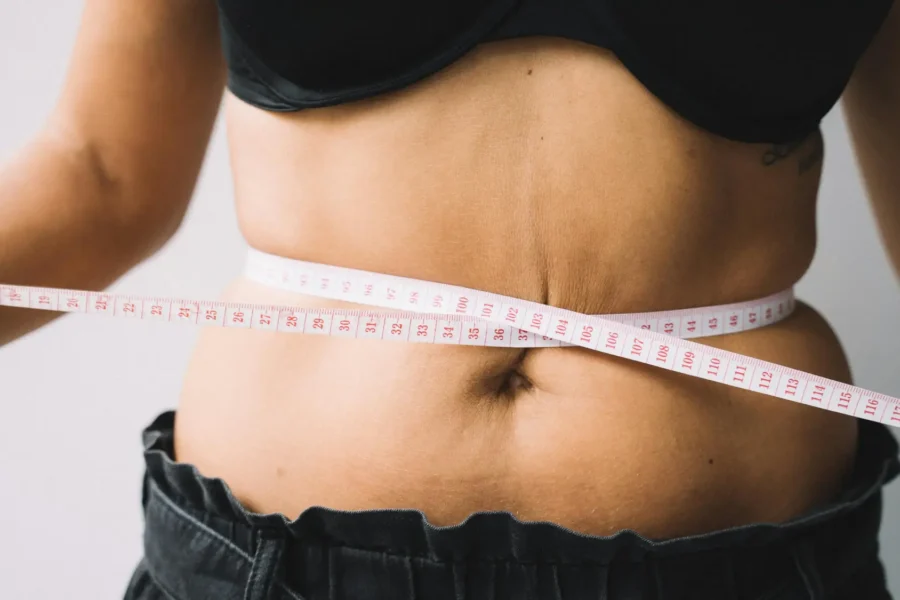Ozempic, a medication originally developed for diabetes, has become widely popular for weight loss due to its effectiveness in appetite suppression and blood sugar regulation. Millions have celebrated significant reductions in body weight, often rapidly. While many embrace the pounds shed, a common and often unexpected concern arises: what happens to the skin after this rapid weight loss?
The Challenge of Skin Laxity Post-Weight Loss
When weight drops quickly, particularly with medications like Ozempic and Terzepitide, the skin, which has stretched over time to accommodate the increased volume, can struggle to contract back to fit your new shape. This leads to varying degrees of loose, sagging skin, often referred to as skin laxity. The areas most commonly affected include the abdomen, arms, thighs, breasts, and even the face and neck.
This excess skin can be more than just an aesthetic concern. It can significantly impact confidence and comfort, leading to:
- Physical Discomfort: Rashes, irritation, and hygiene issues can occur in skin folds.
- Limited Mobility: Excess skin can hinder movement and make exercise less comfortable.
- Clothing Challenges: Finding clothes that fit well can become difficult.
- Body Image Issues: Despite significant weight loss, the presence of loose skin can prevent individuals from fully appreciating their transformation and achieving their desired body image.
Plastic Surgery Solutions: Restoring a Toned Appearance
Fortunately, plastic surgery offers highly effective solutions to restore a smooth, toned, and more proportionate appearance after significant weight loss. These procedures, collectively known as body contouring surgeries, target the excess skin and sometimes stubborn fat pockets that remain despite diet and exercise.
Common body contouring procedures include:
- Tummy Tucks (Abdominoplasty): This procedure specifically addresses excess skin and fat in the abdominal area, and, crucially, it can also tighten weakened or separated abdominal muscles (diastasis recti), which is common after significant weight fluctuations or pregnancy. The result is a firmer, flatter, and more toned midsection.
- Arm Lifts (Brachioplasty): Designed to remove sagging skin from the upper arms, often referred to as “bat wings.” This tightens the underlying tissue, creating a more contoured and proportionate arm shape.
- Thigh Lifts (Thighplasty): Targets loose skin and excess fat on the inner and/or outer thighs, resulting in smoother, firmer thigh contours.
- Body Lifts (Lower Body Lift or Upper Body Lift): These are more comprehensive procedures that address laxity in multiple areas simultaneously. A lower body lift, for instance, can tighten the abdomen, buttocks, hips, and outer thighs. An upper body lift might address the back, chest, and arms.
- Liposuction: While primarily for fat removal, liposuction can be combined with skin excision procedures to refine results and target isolated pockets of fat.
These surgeries not only remove surplus skin but also tighten underlying muscles and tissues, giving you a firmer silhouette.
Timing Your Surgery: When is the Right Time?
If you’ve lost weight through Ozempic, Terzepitide, or any other method, it’s best to wait until your weight stabilizes before considering surgery. A period of stable weight (typically 3-6 months) is important for several reasons:
- Optimal Results: Further weight fluctuations after surgery can compromise the results.
- Nutritional Status: Ensuring your body has adequate nutrients for optimal healing is crucial.
- Realistic Expectations: Your surgeon can better assess the final amount of excess skin and fat once your weight has plateaued.
During your consultation, your surgeon will assess your skin’s elasticity, fat distribution, and overall health to create a personalized plan. They will also discuss the surgical approach, expected recovery, and potential scarring, which is an inherent part of procedures involving skin removal.
Non-Surgical Alternatives and Their Limitations
Remember, surgery isn’t the only option. Non-surgical skin tightening treatments and radiofrequency therapies can provide mild improvement but may not match surgical results for significant excess skin. While these non-invasive methods can be excellent for mild to moderate skin laxity or for maintaining results, they generally cannot address the substantial amounts of loose skin often seen after significant weight loss.
Embracing Your Full Transformation
Ultimately, combining effective weight loss (whether through Ozempic, diet, or exercise) with contouring surgery can help you fully embrace your transformation with confidence and comfort. These procedures are often the final, crucial step in achieving the body shape that truly reflects the hard work and dedication invested in your weight loss journey. They can significantly improve quality of life, allowing you to enjoy your new, healthier self without the physical and emotional burden of excess skin.



